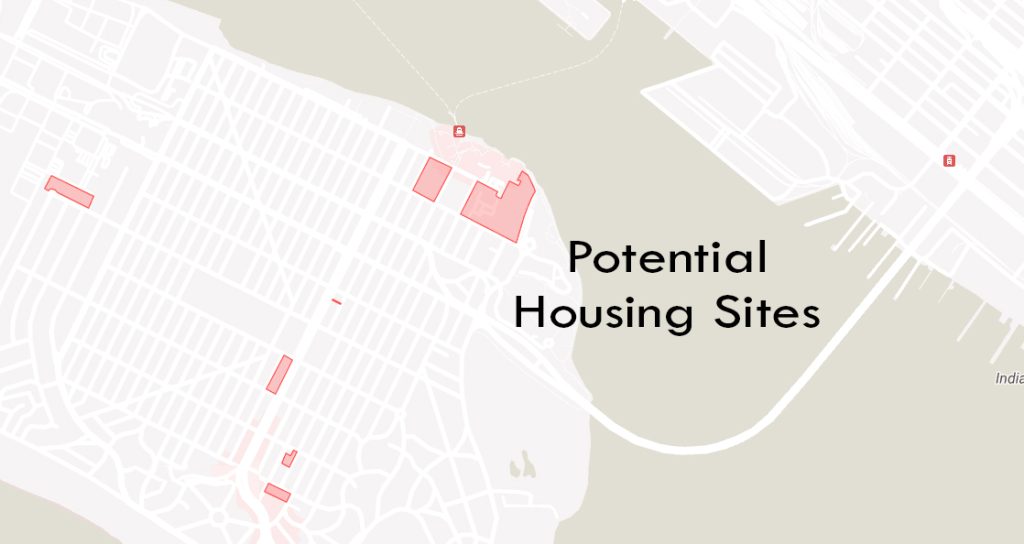In its struggle to add 912 housing units to Coronado, a draft plan released by the city outlines nine potential sites for more housing, supplemented by carriage house conversions, accessory dwelling unit construction, and new military housing.
The sites, including parcels currently used as a grocery store, a childcare facility, and the Coronado Police Department, could be rezoned to accommodate more housing as mandated by the state. Potential projects include mixed-income developments that skew more toward higher earners, but also include potential low-income housing for teachers and veterans.
The report will be discussed at a community workshop at 4 pm on Oct. 12. City officials will collect public input then and again at the Oct. 17 council meeting, in which the Coronado City Council will decide whether to submit the plan to the state for approval.
The plan hinges on development of 374 new units of housing by the U.S. Navy, which owns 67 percent of the land in Coronado. In the past, city officials have decried their housing allocation as unfair for not taking into account how much land the military owns in the city.
The plan also would incentivize the construction of accessory dwelling units (ADUs) and conversion of carriage houses. Carriage houses differ from ADUs only in that they do not include a kitchen, and they must add one to count as a housing unit. The plan projects that 80 percent of the city’s carriage houses will convert.
Coronado, like all cities in California, must zone for additional housing units as a part of the state’s Regional Housing Needs Assessment cycles, which last eight years. Coronado was initially allocated 1,001 units for the current cycle, which ends in 2029, but the number was ultimately decreased to 912.
This was a sharp increase since the 50 units Coronado was assigned in the past housing cycle. In 2021, the city submitted a plan to zone for 344 new units of housing rather than the full 912, a proposal that the state rejected.
Coronado, along with three other local cities, sued the San Diego Association of Governments over their allocation, ultimately losing the suit in 2022. In January, the California Department of Housing and Community Development (HCD) warned the city that it must comply with its housing element allocation or face legal action.
In this cycle, Coronado must plan for 312 units affordable to very low income households, 169 units affordable to low income households, 159 units affordable to moderate income households, and 272 units affordable to above moderate income households.
“Low income” is defined as a household of four earning less than $92,400 annually; while “very low income” households of four must earn less than $57,750. A “moderate income” designated household of four earns less than $111,250.
The city’s draft plan outlines three main sources for these units.
Navy housing
The U.S. Navy plans to build 374 units of barracks housing on military-owned land in Coronado. The project has already received federal funding, and the units will house two sailors per unit, although E-4 ranked sailors with more than four years of experience have the option to be assigned to a private room.
Married sailors whose families live locally, regardless of rank, are ineligible for unaccompanied housing. Higher ranking sailors and all officers are prohibited from living in the barracks.
The units would count as anywhere from very-low-income housing to moderate-income housing, depending on sailor assignments. For example, a room housing two E-3s would be under the income threshold for low-income housing, but two E-4s could be classified as a moderate-income household.
The Navy’s planned unit breakdown would yield 305 low-income units and 69 moderate-income units.
Carriage houses and ADUs
Since 2018, California has passed a series of laws incentivizing the construction of accessory dwelling units in effort to increase housing density and curb the housing crisis.
Since their passage, permits for ADUs in Coronado have increased by more than 400 percent, although they are still minimal. In 2022, for example, the city issued 16 permits for ADUs.
Coronado also has 129 carriage houses within its limits, and it will develop a program to incentivize their conversion into housing units. The city projects that 80% of them – for a total of 103 units – will be converted, with 72 projected as lower income (low- and very low income) housing.
Additionally, the draft plan projects that 195 additional ADUs will be built before the housing cycle ends in 2029. All ADUs constructed in Coronado between 2018 and 2022 were designated as above moderate income housing, but under this plan, 60% will be lower income thresholds.
To incentivize property owners to provide ADUs and carriage houses for lower earning households, the city plans to implement a program which, in part, would waive parking requirements and extend and expand state-implemented fee waivers.
Opportunity sites
The draft plan outlines 10 opportunity sites where more housing could be built, although one of those sites is the aforementioned new military housing at 3632 Tulagi Road.
However, even if Coronado rezones these parcels to allow for more housing, that does not mean housing will be built; the ultimate choice falls to landowners. The HCD simply requires that cities rezone to allow for 912 units of additional housing (plus a 15 percent buffer).
The nine additional sites are summarized below:
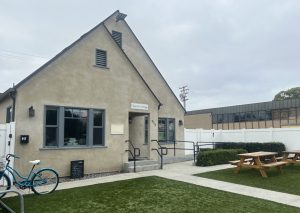 919 C Avenue: The 0.62-acre site is owned by the Parish of Christ Church, which has expressed interest in developing affordable housing. If rezoned, the parcel would have a total unit potential of 25, but a realistic capacity development of 19 units.
919 C Avenue: The 0.62-acre site is owned by the Parish of Christ Church, which has expressed interest in developing affordable housing. If rezoned, the parcel would have a total unit potential of 25, but a realistic capacity development of 19 units.
“The site’s strong access to amenities, municipal services, and schools makes it an excellent candidate for lower-income units,” the draft plan reads.
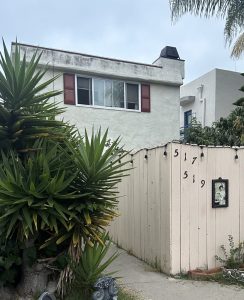 517 Orange Avenue: Currently, a duplex sits on this 0.08-acre parcel, and it was recently purchased by the city with plans to convert it to affordable housing. It would replace two above moderate-income housing units with three lower-income housing units, for a net yield of one unit.
517 Orange Avenue: Currently, a duplex sits on this 0.08-acre parcel, and it was recently purchased by the city with plans to convert it to affordable housing. It would replace two above moderate-income housing units with three lower-income housing units, for a net yield of one unit.
 1224 10th Street: This parcel, which is walking distance from schools, grocery stores, and parks, is currently an office building. If rezoned, it could hold up to 22 units, but as it would allow for mixed use, the report assumes an actual 50% capacity. The yield: three lower income units and eight above moderate units.
1224 10th Street: This parcel, which is walking distance from schools, grocery stores, and parks, is currently an office building. If rezoned, it could hold up to 22 units, but as it would allow for mixed use, the report assumes an actual 50% capacity. The yield: three lower income units and eight above moderate units.
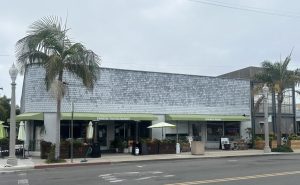 1001 C Avenue: The owner of this retail property at the corner of 10th Street and C Avenue is interested in developing housing units, the draft report says, projecting mixed-use development yielding three lower income units and eight above moderate income units.
1001 C Avenue: The owner of this retail property at the corner of 10th Street and C Avenue is interested in developing housing units, the draft report says, projecting mixed-use development yielding three lower income units and eight above moderate income units.
105 B Avenue: This proposed development site comprises most of the block perimetered by 1st Street, B Avenue, 2nd Street, and C Avenue. If rezoned, it could generate up to 116 units, but the city projects a realistic development of 58 units. Of those, 15 would be lower income units.
The properties currently have retail and commercial businesses on them, including a Smart & Final Extra! and fast food restaurants.
“Local residents would like grocery use to continue on the site, and city staff will work with the owner/developer to incorporate a grocery component,” the draft plan says.
149 A Avenue: Currently a parking lot, this 1.28-acre parcel could yield up to 58 units if rezoned, but planners project a realistic development of 38 units. Of those, 15 would be lower income units.
1515 Second Street: This parcel already has a 549-unit apartment complex on it, but the 12.66-acre site has underutilized as well as parking lot space that could generate 167 new units. The report projects 12 would be lower income units, 55 would be moderate, and 100 would be above moderate.
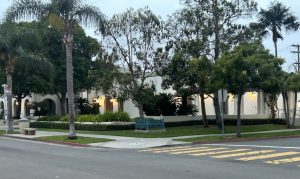 700 Orange Avenue: This parcel, which currently houses the City of Coronado Police Department, could be rezoned for up to 63 housing units, though its projected actual development is 47 units. All of these would be lower income units.
700 Orange Avenue: This parcel, which currently houses the City of Coronado Police Department, could be rezoned for up to 63 housing units, though its projected actual development is 47 units. All of these would be lower income units.
“Housing for very low income veterans is a potential affordable housing project,” the draft plan reads, noting that the city owns most of the land and therefore is likely to yield 100 percent low-income housing.
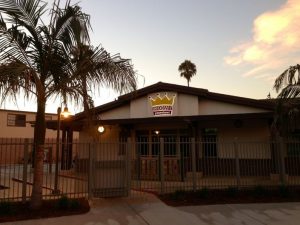 201 6th Street: This CUSD-owned property is a former school that closed due to lower enrollment. Now, it’s a childcare and pre-school center, but the district is “open” to develop housing for teachers, the draft report says. It projects 67 lower income units and 34 moderate income units, for a total of 101.
201 6th Street: This CUSD-owned property is a former school that closed due to lower enrollment. Now, it’s a childcare and pre-school center, but the district is “open” to develop housing for teachers, the draft report says. It projects 67 lower income units and 34 moderate income units, for a total of 101.
| Location | Very low/low income units | Moderate income units | Above moderate income units |
| 919 C Avenue | 19 | 0 | 0 |
| 517 Orange Ave | 3 | 0 | 0 |
| 1224 10th Street | 3 | 0 | 8 |
| 1001 C Ave | 3 | 0 | 8 |
| 150 B. Ave | 15 | 0 | 43 |
| 1515 2nd Street | 15 | 55 | 100 |
| 149 A Ave | 12 | 0 | 23 |
| 700 Orange Ave | 47 | 0 | 0 |
| 201 6th Street | 67 | 34 | 0 |
| Military Housing | 305 | 69 | 0 |
| ADUs | 117 | 25 | 53 |
| Carriage Houses | 72 | 0 | 31 |
| Totals | 678 | 183 | 266 |
RELATED:




